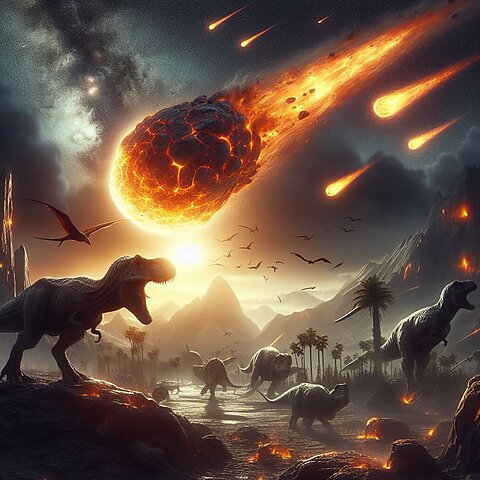
Paul Matzko
Journalism has been in palliative care for quite some time now, but an already dire situation has taken a turn for the worse over the last six months. Hundreds of journalists, including those at major regional papers like the Los Angeles Times and Washington Post, have been laid off. Billionaire owners who snapped up struggling periodicals are rethinking their investments. It’s been enough for Clare Malone, writing in the New Yorker, to ask, “Is the media prepared for an extinction‐level event?”
It is by no means a great time to be an employee of a legacy news outlet, but it’s vitally important that we understand precisely *why* the traditional news industry is collapsing before we pursue any policy solutions half‐cocked.
Let me start with what is not a major cause of the news industry’s decline. News outlets often accuse platforms like Google and Facebook of “piracy” for sharing links to news articles. But as I’ve written at length, news aggregators are natural complements to news producers, not antagonists to them; it’s a mutually beneficial exchange of content for distribution.
Unfortunately, those who misunderstand that complementary relationship have sought to extract cash from Big Tech to bail out Big Ink. But in doing so they have actually hastened the decline of legacy newspapers by spooking the platforms into avoiding news content altogether, leading to a massive, immediate, and dire decline in organic user traffic and thus diminished advertising revenue.
Inasmuch as there is a proximate cause of death for the news industry, it’s a function of the digitization of classified ads, which were once the largest revenue source for most pre‐internet newspapers; they were “rivers of gold,” to quote Rupert Murdoch. But Craigslist, eBay, and other platforms transmuted those golden rivers into consumer surplus by reducing the friction and expense of person‐to‐person commerce. There is no shoving that genie back into its bottle. (Not that we should want to try.)
Others have blamed “ruinous competition” for the crisis as consumers are suddenly able to access almost any news outlet anywhere in the world. News outlets were once the beneficiaries of geographically‐defined semi‐monopolies, able to charge high premiums from advertisers who had few other ways to reach so large an audience. But today, legacy news outlets must compete for readers with thousands of other news outlets from all over the country and even the world. This is correct, however, the problem for news outlets is inestimably larger still.
That’s because offline news is not merely competing with online news; offline news is competing with online everything.
An hour spent reading through New Yorker articles counts exactly the same as an hour spent swiping through TikToks or scrolling through Twitter’s infinite feed or watching a video on YouTube or streaming a movie on Netflix or listening to a podcast and so on, ad infinitum. Every platform is competing for scarce consumer attention (and advertiser and/or subscription dollars).
Consumer attention is relatively elastic and online content is somewhat fungible. This is a point that Clare Malone’s New Yorker essay makes quite effectively.
In addition to consistently publishing very good journalism, the Times has a robust cooking app, a series of popular games, and the product‐review site Wirecutter. It is not so much a newspaper as a digital life‐style brand. Both the Washington Post and the Los Angeles Times have made efforts to expand their non‐news offerings—the Post beefed up its health section and the L.A. Times leaned into food coverage and around‐the‐town entertainment guides. But, even as outlets have tried to complement news coverage with other offerings, they’ve faced a fresh dilemma: news subscriptions—the great hope of media—are now directly competing with entertainment ones. The Reuters Institute for the Study of Journalism released a report in 2023 that found respondents often weighed their renewal of news subscriptions against digital streaming services. “We have Disney+, Hulu, Netflix, Amazon Prime, currently HBO Max and Spotify, Kocowa, and BritBox,” one survey respondent said. “I used to have The Washington Post but it got too expensive to have all the subscriptions.” Another said news was “as important as anything, but if I were to cut one, I would first think of cutting my news subscription before any other.”
It’s worth noting that this was the case even before the advent of the internet. In addition to reporting on politics and current events, newspapers added topical inserts, weekend editions, sports sections, cartoon pages, crosswords, and a host of other “lifestyle” content.
But it turns out that this strategy can work in both directions. News + lifestyle content = lifestyle content + news. The equation sums up the same. It doesn’t really matter whether you’re a newspaper that adds Wordle or if you’re a lip‐syncing video app that adds UnderTheDeskNews. Both are engaged in direct competition for scarce consumer attention with a package of content that includes news.
This reality ought to force legacy news producers to ask some uncomfortable questions of themselves. Consumers are voting with their eyeballs in a newly unconstrained attention marketplace. If news organizations are unable to make a convincing pitch for their current product, perhaps the failure lies with them rather than with the market.
But instead of facing up to the very real challenges of producing a compelling news product in a digital age, it’s tempting to blame the “addictive” nature of digital technology. Our failures, they say, are not actually our fault; it must, instead, be those sinister, algorithmic magicians who brainwash gullible idiots — also known as the general public — with dopamine‐enhancing features that convince them to, <checks notes>, get something for free that they could pay us for instead! What fools!
The good news is that there are news producers who are experimenting and adapting to the new landscape. There are crowd‐sourced investigative journalists, TikTok analysts, digital‐only local news startups, and hyper‐specialized newsletters. It’s an entire, emergent “new news” media ecosystem that has a real chance of providing a sustainable and robust alternative to legacy news institutions.
Clare Malone’s essay on the news media’s “extinction‐level event” was illustrated with a header image showing an asteroid made of up fiery 1s and 0s plummeting towards a group of dinosaurs carrying the names of various newspapers and periodicals. (Props to illustrator Nicholas Konrad for picking a T‑Rex to represent The New York Times.) But to continue the metaphor, the destruction of these lumbering dinosaurs — as hopelessly devastating as it may first appear to be — may just clear the way for new alternatives that may soon be walking upright on their own two feet.








